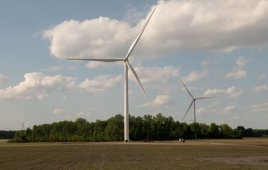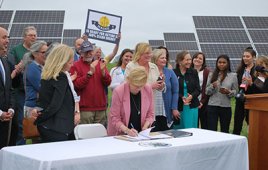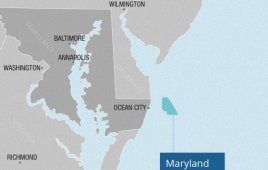Renewables, including hydro, now account for over 30% of the total global installed power generation capacity and 23% of total global electricity production. In the past 10 years, wind and solar PV have witnessed an explosive average annual growth of 23% and 50% respectively, although their combined contribution to the global electricity supply is currently only 4%, according to a new report by the World Energy Council launched on 20 September.
 The Report entitled ‘Variable Renewables Integration in Electricity Systems 2016 – How to get it right’ is published by the World Energy Council in partnership with CESI S.p.A. and draws upon 32 country case studies, representing about 90% of installed wind and solar capacity worldwide.
The Report entitled ‘Variable Renewables Integration in Electricity Systems 2016 – How to get it right’ is published by the World Energy Council in partnership with CESI S.p.A. and draws upon 32 country case studies, representing about 90% of installed wind and solar capacity worldwide.
Renewables have become big business: in 2015 a record $286 billion was invested in 154 GW of new renewables capacity (76% in wind and PV), by far overtaking the investment in conventional generation to which 97 GW were added.
The report is launched as part of the build up to the 23rd World Energy Congress which will be held between October 10 to 13 in Istanbul. The topic of renewables in the global energy mix and how they will help accelerate the transition to a low carbon economy is one of the key issues on the first day of the Congress.
Christoph Frei, Secretary General, World Energy Council, said: “The success of both the development of intermittent renewables and their efficient integration in electricity systems fundamentally depends on the right market design and regulatory framework and solid regional planning to avoid bottlenecks.”
Improving technologies and cost reductions are driving down capital expenditure (CAPEX) and operation and maintenance (O&M) costs of variable renewables. Recent data available suggests the lowest auction value for wind is a tariff of $28/MWh in Morocco and $30/MWh for a solar PV 800 MW plant in Dubai. These exceptionally low values cannot generally be projected to other countries with completely different wind and sun load factors and local costs but show a downward trend. In continental Europe wind and solar load factors are up to 50% lower and local costs considerably higher.
Alessandro Clerici, Chair of the Renewable Energy Sources Integration in Electricity Systems knowledge network, said: “Appropriate technologies and policies, including regulation and market design play a fundamental role in both development of variable renewables and their efficient integration in electricity systems. Policy solutions are complementary to effective and affordable technology solutions.
“What works in any particular country depends both on its individual circumstances and the quality of execution of policies. A holistic and long-term approach to system design is key when planning Variable Renewable Energy Sources integration, including honest and transparent cost assessment to incentivize investment and ensure supply security and a robust energy sector regardless of a country’s resources or geographic location.”
The report highlights lessons learnt, identifies critical success factors and extracts concrete measures for successful variable renewable energy sources integration in electricity systems.
Key recommendations to address the challenge of sustainable variable renewables integration include:
- Policymakers must define market rules to ensure a more sustainable energy system in line with the objectives of the Trilemma, including clearly defined CO2 emissions regulations.
- Introducing capacity markets can help ensure security of supply, as energy-only based markets are often insufficient to guarantee reliable supply in systems with a large share of variable renewables.
- Weather forecasting methodologies need further development to achieve better accuracy and to rapidly manage the changing nature of wind and sun/variability.
- In the light of the growing importance of Variable Renewable Energy Sources globally, industry and policymakers need to address emerging issues to ensure their continued growth.
For the full publication:
https://www.worldenergy.org/publications/2016/variable-renewable-energy-sources-integration-in-electricity-systems-2016-how-to-get-it-right/
Filed Under: Uncategorized




